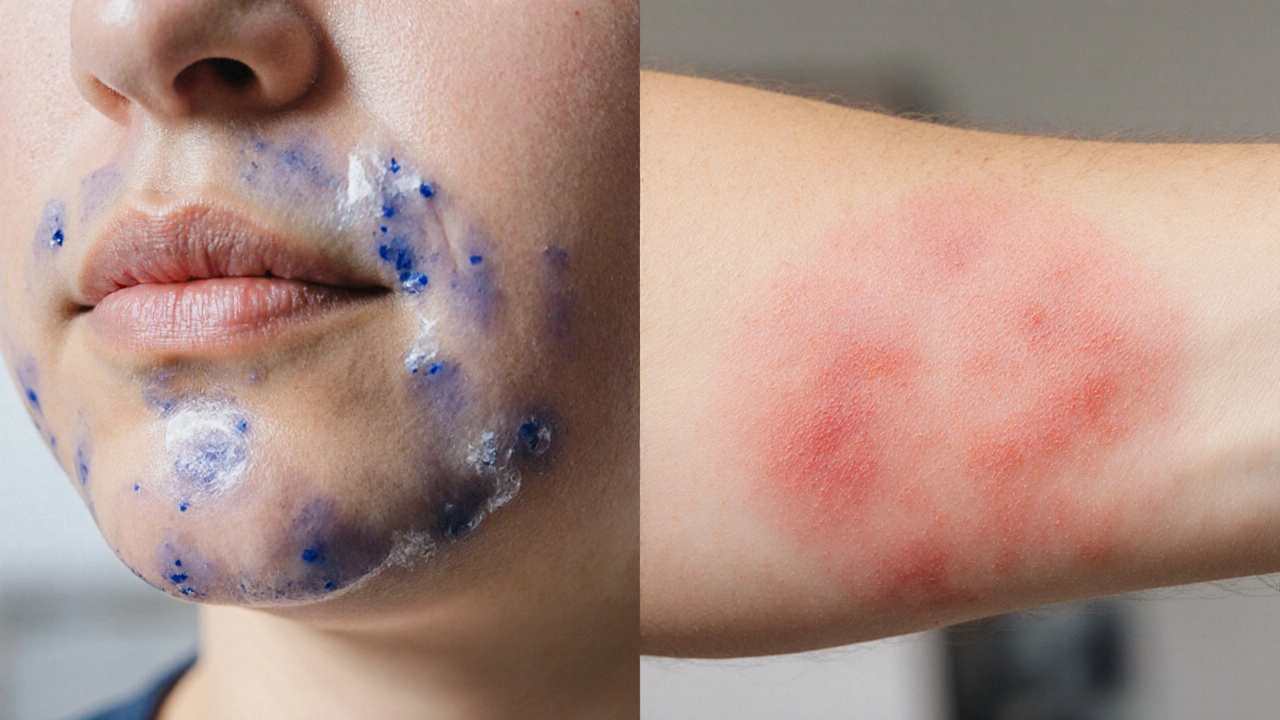Hives – What They Are and How to Manage Them
When dealing with hives, also known as urticaria, you’re facing itchy, red welts that pop up on the skin. Also called skin rash, hives are a visible sign that the immune system has over‑reacted to a trigger. The condition often stems from an allergic reaction, where the body releases histamine and other chemicals, causing blood vessels to swell. To calm that response, many turn to antihistamines, which block histamine receptors and reduce itching and redness. Understanding these three core elements—hives, allergic reactions, and antihistamines—sets the stage for effective relief.
Key Triggers and How to Spot Them
Hives don’t just appear out of nowhere; they’re usually tied to something you ate, touched, or inhaled. Common culprits include fresh foods like shellfish or nuts, insect bites, pet dander, and even stress or temperature changes. When you notice a flare, ask yourself what you’ve been exposed to in the last 24‑48 hours. Keeping a simple diary can reveal patterns that you might otherwise miss. If a specific food keeps coming up, an elimination diet under a doctor’s guidance can confirm the link. By pinpointing the trigger, you reduce the chance of future episodes and can tailor your antihistamine regimen accordingly.
Beyond food and insects, medications themselves can spark hives. Antibiotics, NSAIDs such as ibuprofen, and even certain blood pressure pills are known offenders. If you suspect a drug is to blame, never stop it abruptly—talk to your prescriber first. They may switch you to an alternative or suggest a short course of antihistamines while your body adjusts. This approach mirrors the comparison guides we feature for medications like Ketorolac versus ibuprofen, helping you weigh benefits and risks before making a change.
Environmental factors also play a role. Pollen spikes in spring, dust mites indoors, and even tight clothing can irritate the skin’s surface, prompting a hive outbreak. Simple adjustments—using hypoallergenic bedding, washing new clothes before wearing, or applying a gentle moisturizer—can create a barrier that keeps irritants at bay. Think of these steps as the preventive side of the same equation that antihistamines handle on the reactive side.
When hives become chronic—lasting more than six weeks—the picture changes. Chronic urticaria often involves an autoimmune component, where the body mistakenly attacks its own mast cells, releasing histamine without an external trigger. In these cases, first‑line antihistamines might not be enough, and doctors may add leukotriene blockers or consider short courses of oral steroids. This layered treatment strategy reflects the same systematic comparison we use for drugs like Dapasmart versus other diabetes meds, ensuring you get the right level of therapy for your specific situation.
Diagnosing the cause is only half the battle; treating the symptoms efficiently is the other. Over‑the‑counter antihistamines like cetirizine, loratadine, or fexofenadine are usually effective and have minimal drowsiness. For faster relief, a non‑sedating option can be taken during the day, while a sedating antihistamine like diphenhydramine may help you sleep through a night‑time flare. If you need stronger control, a doctor might prescribe a higher dose or a different class, such as H2 blockers, which work alongside antihistamines to reduce skin reactions.
Topical treatments can also complement oral meds. Calamine lotion, cool compresses, or oatmeal baths soothe the itching and calm inflamed skin. Avoid hot showers, which can widen blood vessels and worsen welts. Instead, opt for lukewarm water and gentle, fragrance‑free cleansers. These practical tips echo the advice we give for managing side effects of other drugs, like using protective measures when taking ketorolac or gabapentin.
Finally, remember that hives often signal a broader allergy issue. If you experience them repeatedly, consider seeing an allergist for skin prick testing or specific IgE blood tests. Identifying the exact allergen empowers you to avoid it long‑term and may open doors to desensitization therapies, which gradually train your immune system to tolerate the trigger without overreacting.
All these insights—recognizing triggers, choosing the right antihistamine, and adding supportive skin care—form a complete toolbox for handling hives. Below you’ll find a curated set of articles that dive deeper into related topics, from medication comparisons to diet plans, giving you actionable guidance for every step of your journey.

Angioedema vs. Hives: Key Differences and How to Manage Them
Haig Sandavol Oct 3 17Learn the key differences between angioedema and hives, their causes, symptoms, treatment options, and when to seek emergency care.
More Detail